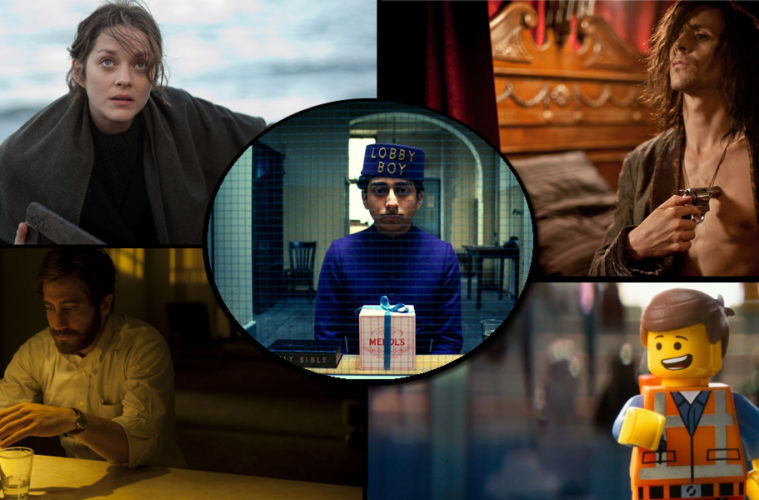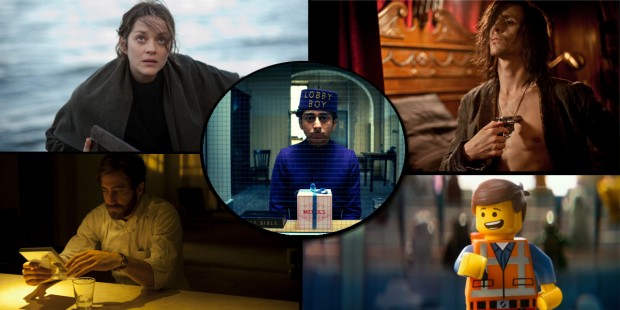With less than a week until 2014 crosses its halfway mark, it’s time to take a look back at the first six months of the year and round up our favorite films. While the end of this year will bring personal favorites from all of our writers, think of the below 25 films as a comprehensive rundown of what should be seen before heading into a promising fall line-up.
As a note, this feature is based solely on U.S. theatrical releases in 2014, with many currently widely available on home video, streaming platforms, or theatrically. Check them out below in alphabetical order, followed by ten films to keep on your radar for the back half of this year.
Blue Ruin (Jeremy Saulnier)
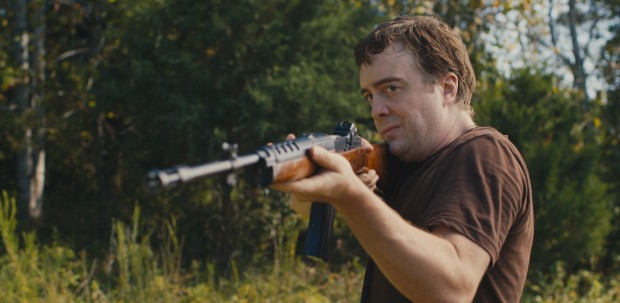
92 minutes of taut physical activity, morbid humor, and gruesome violence, Jeremy Saulnier’s Blue Ruin is one of the year’s leanest and most impressive killing machines. Saulnier begins his film with quiet, character-building chapters, but once he sets his resourceful, pleasingly narrow plot in motion, Blue Ruin becomes nothing more than a series of sharp, vicious set-pieces founded on Nash Edgerton-like bursts of violence. The film is a good example of the kind of genre treat that gets points for disposable ambition: Saulnier’s technique is so controlled, and his sequence staging so clever, that nothing else really matters. – Danny K.
Borgman (Alex van Warmerdam)
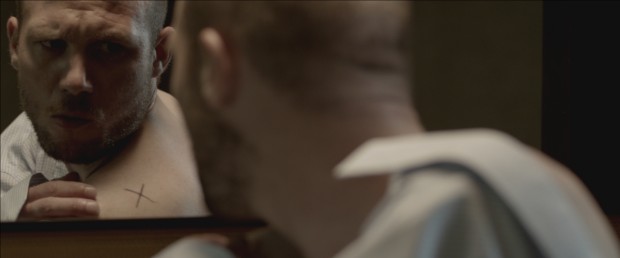
When placed amongst perhaps more “serious” work, it’s easy to see why Alex van Warmerdam‘s latest Dutch production, Borgman, might have got lost in the Cannes shuffle last year. Now arriving in theaters this month, there’s no reason one of the most entertaining and bizarre foreign exports of the year should be avoided. Following a mysterious, otherworldly figure invading a bourgeois family, much of the joy lies in the unexpected. Even if one doesn’t walk away with all the answers (and I don’t believe Warmerdam wants you to), you’ll be glad you took the journey. – Jordan R.
The Double (Richard Ayoade)
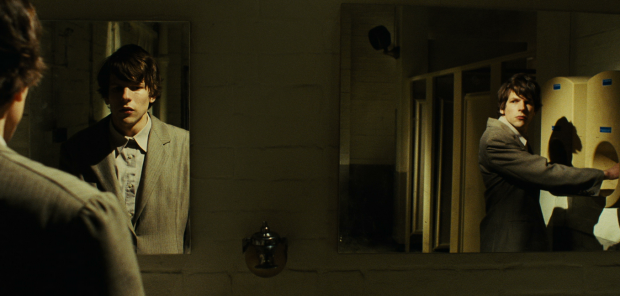
Richard Ayoade’s The Double is darkly comic, unsettling, and visually stunning, with a perfect performance from Jesse Eisenberg as Dostoyevsky’s protagonist. So winning are Eisenberg’s “performances” as the unlucky drone and his brash, winking doppelganger — as are Ayoade’s shadow-filled visuals — that The Double feels like one of 2014’s most gobsmackingly original films. As is often the case when a tricky-to-categorize film emerges (see also: Under the Skin), The Double was unfairly ignored by some and saddled with obvious comparisons by others. (Yes, there are some Terry Gilliam-esque elements. No, it is not a Gilliam rip-off.) If anything, the tone calls to mind Tenant-era Polanski. How interesting that Polanski himself once attempted to film an adaptation of Dostoyevsky’s novel. I imagine he would nod with approval at Richard Ayoade’s creation. – Chris S.
Enemy (Denis Villeneuve)
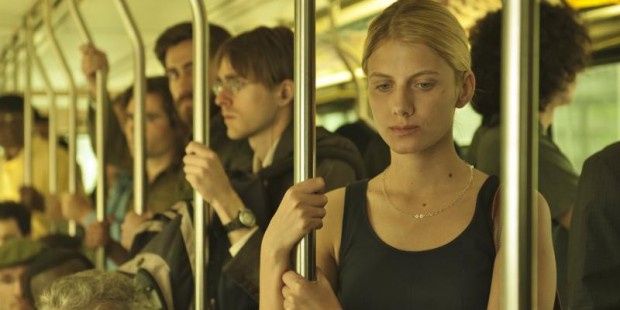
Director Denis Villeneuve‘s latest, Enemy, is a thriller that makes last year’s Prisoners seem cheery by comparison. This is a horror movie where, for the most part, nothing overtly horrific happens. Villeneuve’s film is a 90-minute nightmare that unsettles in small ways. It’s also hugely rewarding on repeat viewings. New details emerge that make Enemy both funnier and scarier and so many detail-packed frames will impact what you take away from the film. – Jack G.
Godzilla (Gareth Edwards)
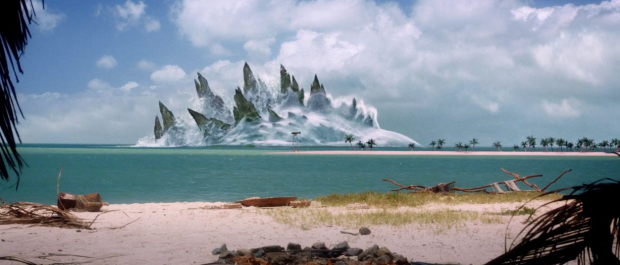
Whoa. What else can one say about this film? The taste of the prior American remake of Godzilla hadn’t yet been completely washed out of our mouths, but, thanks to a stellar marketing campaign that favored mood and atmosphere over bald spectacle, the anticipation for this new incarnation was high. Somehow, Gareth Edwards not only cleared the set bar, but did so with room enough to fit a 300-foot lizard. Thanks to his bold-for-the-time decision to keep the monster in the shadows, Edwards built up a level of heated anticipation and awe before unleashing a final-act climax that had audiences cheering and left people staggering out of the film still vibrating with excitement. This is old-school monster-movie making, the likes of which we all feared had been lost. – Brian R.
The Grand Budapest Hotel (Wes Anderson)
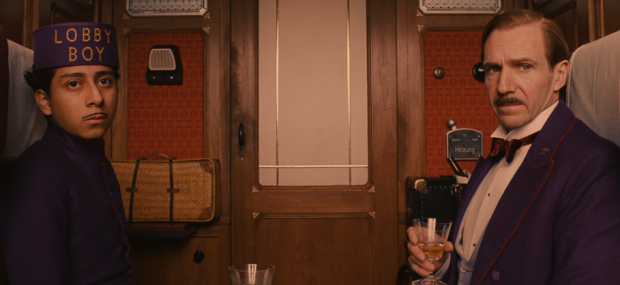
Wes Anderson can always be depended upon for a film people will be talking about toward the end of the year, and 2014 is no different — though since this list is the year so far, I guess we’re going to talk about it in the middle, too. The Grand Budapest Hotel is a showcase of everything that makes Anderson fans drool, from the meticulous tableau he creates to the quirky dialogue and cutaways. It also functions as a rebuke to anyone who finds Anderson to be a one-trick-pony: through an examination of the kind of person who strives to make an imperfect world seem perfect, Anderson creates a beautiful film and a powerful statement, as well as his most emotionally affecting and perhaps deeply personal yet. – Brian R.
Ida (Pawel Pawlikowski)
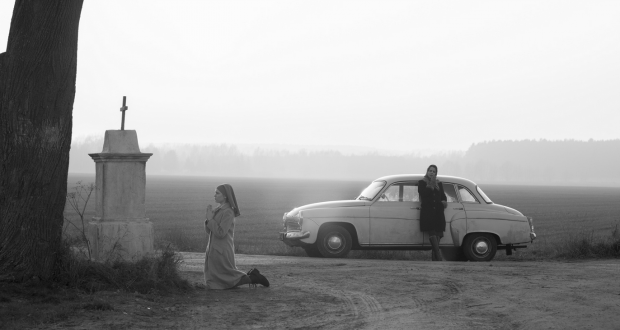
A black-and-white film about an orphan nun trying to find out about her family sounds like the kind of clichéd awards bait which could easily fall flat on its face. Pawel Pawlikowski manages to undermine those dire possibilities by making a subtle, affecting picture about long-buried secrets, as well as the conflicted dialogue between virtue and vice. The film is buoyed by the strong performances of its two leads, Agata Trzebuchowska and Agata Kulesza, both of whom manage to bring real humanity to characters who begin as archetypes. Add to this base the way in which Ida delves deep into horrors wrought by war and attempts to construct some greater peace, and a film that sounds like a didactic one-act play becomes a moving, resonant glimpse into a very human profound in two people’s lives. – Brian R.
The Immigrant (James Gray)
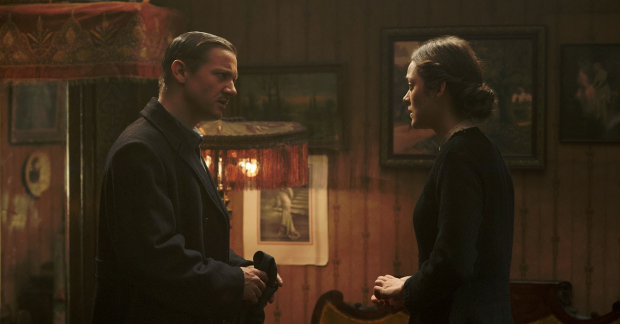
When James Gray rarely (if ever) made films in accord with his contemporaries, it should make more than a bit of sense that, on his biggest effort yet, he’d reach back nearly a century to tell the smallest of immigrant tales. The location which has served him so well over two decades of storytelling — a location he’s captured like no one else and made feel new — is reinvented yet again, at its center career-best work from Marion Cotillard. Her story, familiar though it might seem, is made fresh with small grace notes and careful gestures which build, over two hours, into a rapturous climax. (“You are not nothing.”) A great film that should only grow greater over time. – Nick N.
Jodorowsky’s Dune (Frank Pavich)
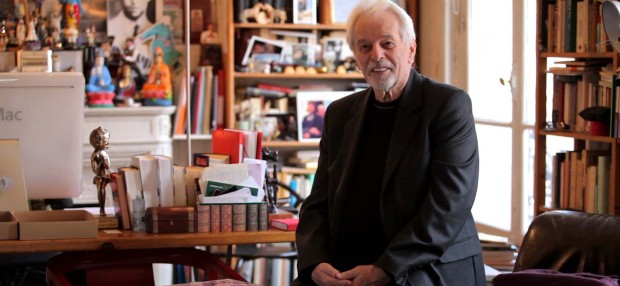
The what if’s are astounding in Frank Pavich’s hilarious and fascinating Jodorowsky’s Dune, existing at the intersection of art history and an alternative history of what might have been. Concept art from what would have proven a visually stunning telling of Dune by cinema’s master of the absurd, Alejandro Jodorowsky, would go on to influence the production design of sci-fi classics Star Wars and Alien. An essential film for sci-fi geeks and film lovers, Pavich has crafted a generous peek behind the curtain, combining present-day interviews — including with Jodorowsky‘s friend, Nicolas Winding Refn — with archival materials and visual renderings. Jodorowsky, known for his psychedelic mix of the sacred and the profane, was ultimately deemed too risky for the studios, and, like many ambitious passion projects, it fell apart in pre-production. – John F.
The LEGO Movie (Phil Lord and Chris Miller)
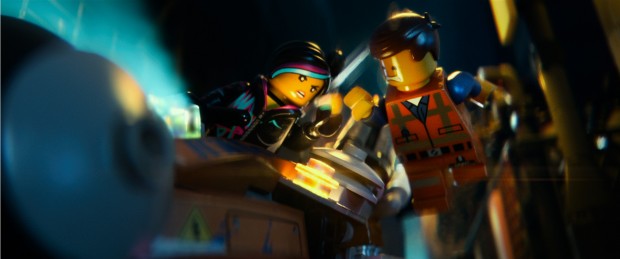
Admit it: When The LEGO Movie was announced, you did not expect it to wind up any best-of-the-year lists. But, against all odds, Phil Lord and Chris Miller’s first smash hit of 2014 — the directing duo’s 22 Jump Street is already well on its way to blockbuster status — is an unadulterated pleasure. This bold, original film has a wildly clever script (by the directors) with a message of creativity that made it a glorious surprise. It is also well-cast: LEGO is the first movie to fully make use of Chris Pratt’s essential sweetness, and offered Elizabeth Banks, Will Ferrell, Liam Neeson, and Morgan Freeman their freshest parts in years. It is not often that a “kids” film entertains adults as much as their children, but The LEGO Movie is far more than a piece of entertainment for the young ones. What could have been a headache-inducing, cynical creation is instead a pop treat. Everything is, indeed, awesome. – Chris S.
Like Father, Like Son (Hirokazu Koreeda)
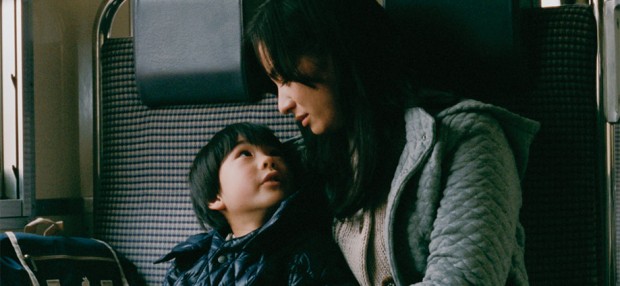
Known for his intimately personal style of filmmaking and, often, drawing from his own experiences, there are always tugged emotional heartstrings that permeate the core of Hirokazu Koreeda’s films. With his latest title, Like Father, Like Son, the Japanese director drew from his experience of becoming a father to craft an intensely poignant film about parenthood. Oftentimes heart-wrenching, Koreeda is able to weave a range of emotions by remaining slightly detached and observing the subtle mannerisms of both families; with such great performances from both of the child actors, it’s near-impossible not be bowled over by their struggle to understand what’s happening. – Raffi A.
Manakamana (Stephanie Spray, Pacho Velez)
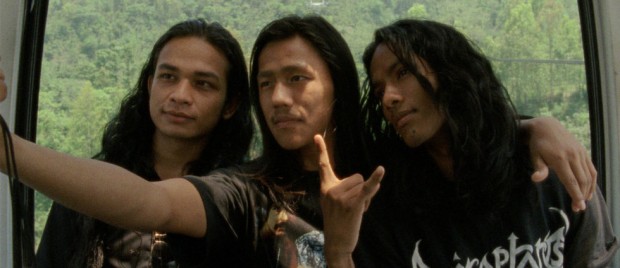
While it’ll easily end up being one of the lowest-grossing features on this list, the latest work from the Harvard Sensory Ethnography Lab is also one of the most powerful, transformative experiences one is bound to experience this year. Taking a different approach than Sweetgrass and Leviathan, Manakamana places us as a passenger on twelve separate trips to and from the titular sacred temple in Nepal. While some may consider it an endurance test, I found it to be a warm, vulnerable exploration of humanity, stripping down barriers which even the vast majority of documentaries can’t help but produce. – Jordan R.
Mistaken for Strangers (Tom Berninger)
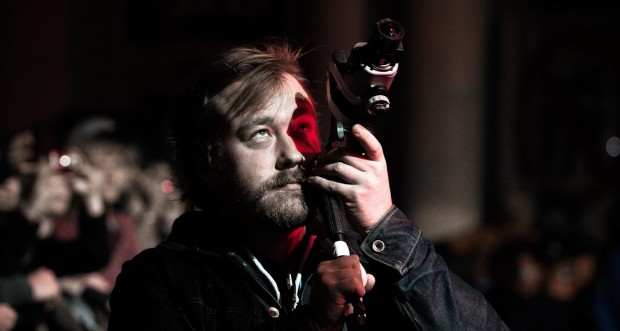
Call it the anti-music documentary. Documenting the mishappenings that occur when Tom Berninger, the brother of The National frontman Matt Berninger, attempts to shoot and edit a film about the band, Mistaken for Strangers is less about music than it is about the pursuit of art and achievement. The more Tom fumbles, the more we come to understand and appreciate this doc for its honest look at what constitutes failure. – Dan M.
Night Moves (Kelly Reichardt)
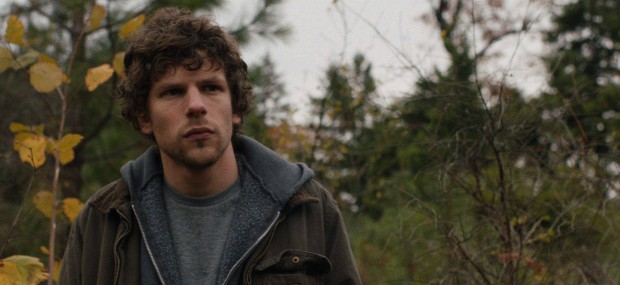
Rather than the gear shift that was to be expected, Night Moves rather clearly offers a careful reconfiguring (but no sacrifice) of the idiosyncrasies, both formal and narrative, which have made Kelly Reichardt’s voice so important to the American cinema. A critical adherence notwithstanding, the new sense of ambition which Night Moves allows her to exhibit speaks volumes, posing the question of where, now, she might go. – Nick N.
Norte, the End of History (Lav Diaz)
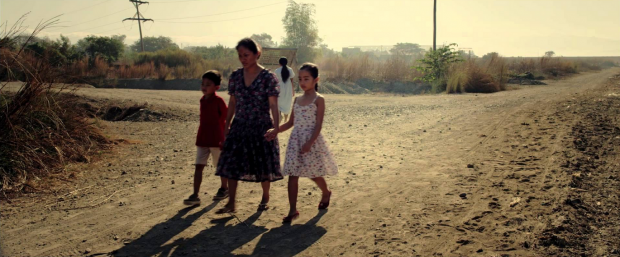
While Lav Diaz’s Norte, the End of History may not be easily classified or explained — it could be summarized in terms of basic narrative trappings, but not as far as intent or accomplishment are concerned — it conjures an intoxicating psychology, transplanting all of its socio-political concerns through the eyes of characters so wholly realistic that we feel we’ve actually met them. Diaz, whose works are known both for their langorous observations of very human systems and their overwhelming attention to spiritual / psychological details, has concieved a work as ambitious as any made by the humanist directors of yester-year. (Kenji Mizoguchi particularly comes to mind.) Drawing some of his inspiration from Dostoevsky’s Crime and Punishment, Diaz tells one encompassing story from three essential viewpoints, although the summation of these interspections are more thematic than narrative, introducing us to characters who wind up on different spectrums and on different receiving ends of various social pressures that exist within the Phillipines. The film’s extensive running time — upwards of four hours, and with nary a shot or moment I can imagine cutting — and Diaz’s own distinctive, hypnotic visual style — long master shots and intuitive relocations of space — do make Norte something of a challenge, but it’s been a long time since a filmmaker rewarded with so much in exchange for our patience. – Nathan B.
Nymphomaniac (Lars von Trier)
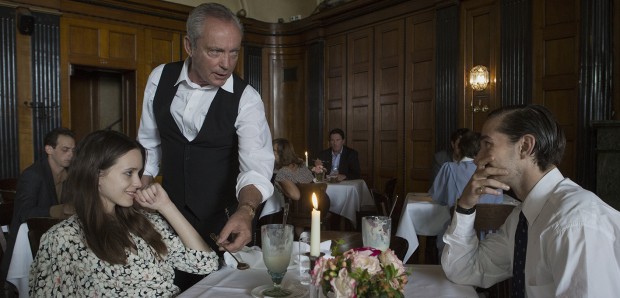
Once the dust has settled, the posturing ceased, and both parts made readily available, those who appreciated Nymphomaniac on an initial go-round can more fully see it as one of Lars von Trier’s great achievements. A breezy four hours might feel to contain the world entire — from Bach to Bond to parallel parking to… well — but it never strays from the writer-director’s well-worn tortured-woman narratives, proving how much ecstasy he can truly harness when at the peak of his powers. It feels like it’s been too long since we received something truly essential from his end — this is at least the man’s best film since Dogville, though I, for comparison’s sake, might be inclined to go back as far as Breaking the Waves — but, no matter where he goes next, there will always be Joe’s sexual odyssey. And Rammstein. – Nick N.
Obvious Child (Gillian Robespierre)
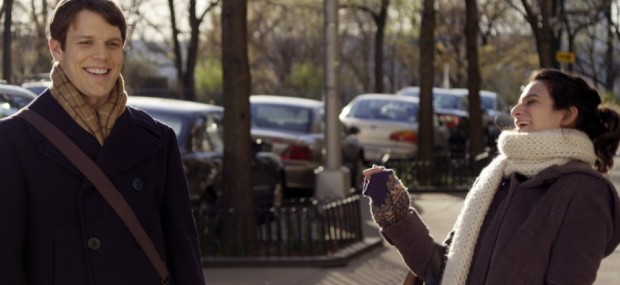
Obvious Child does well in tackling big issues that all women face without a wink or a shrug. And while writer/director Gillian Robespierre offers some political views throughout, she thankfully avoids the soapbox. Small in stature but big in laughs, this film announces comedian leading lady Jenny Slate, a talent we will hopefully see much more of in the near future. – Dan M.
Only Lovers Left Alive (Jim Jarmusch)
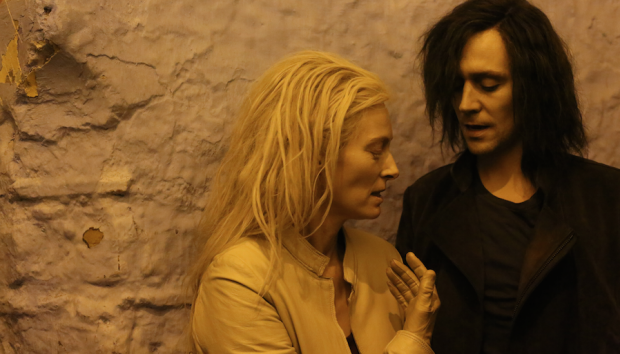
From its opening, woozy camera swirls and, even, the genre-satisfying final shot, Jim Jarmusch’s vampire film is unlike any you’ve ever seen, mostly because it can’t be bothered to take too deep an interest in the subject. Instead of human-hunting or castle-scouring, he asks us to spend a bit of time with two mouthpieces of his own snobby, cranky, ultimately affable personality as they… talk art. That’s the extent of it, event-wise, but there’s too much else to dismiss, most notably the trenchant commentary on why people are attracted to these sorts of things in the first place and why, unfortunately, it might not make us as happy as we feel. Yet, for all its elucidating on that point, few films from 2014 offer as much pleasure as Only Lovers Left Alive. – Nick N.
The Rover (David Michôd)
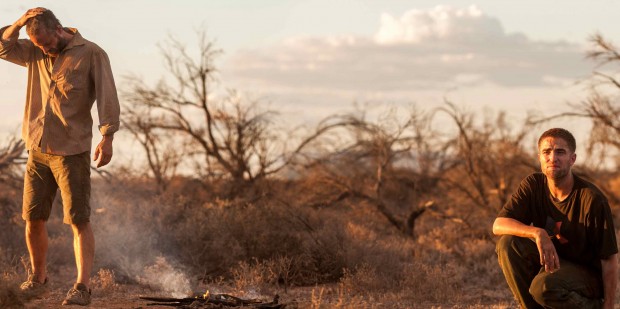
David Michôd’s western is an atmospheric, lean and mean western. His deceptively simplistic second feature is no sophomore slump, as his eye for tension has grown sharper since a feature debut, Animal Kingdom. The Rover is about more than a man going after his car, but, even looking at the picture from a completely surface-level view, it’s still an exciting thriller that’s as good as the rest of the more narratively conventional films on this list. – Jack G.
Snowpiercer (Bong Joon-ho)
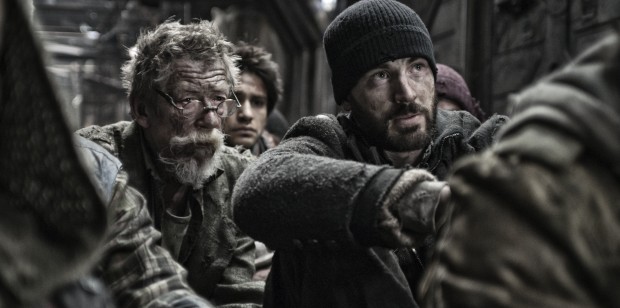
The long stateside wait for Bong Joon-ho‘s Snowpiercer has imbued it with an air of mystery and anticipation that often works against ambitious niche cinema. With the final result, however — a bold and brutally perceptive sci-fi actioner that has some of the same visceral insistence found in Blade Runner and Brazil — anticipation gives way to intoxication. Telling the story of all remaining humanity enclosed on an impossibly long train, barreling through an Earth trapped in an Ice Age, Bong gives us dystopic vision in the form of an uncompromising action roller-coaster. So fastidious is Snowpiercer in its world-building that we even know the specifics of that devastated arctic landscape which sits beyond the train window — as well as the surprising contents of each car — as the down-trodden tail residents fight their way to the front, towards the ominous Sacred Engine. One of the most emotionally exhausting and satisfying films of the year thus far, Snowpiercer also offers a treat with its very distinctive cast, led by a Chris Evans performance that redefines the actor’s talents and makes us consider them anew. – Nathan B.
Stranger by the Lake (Alain Guiraudie)
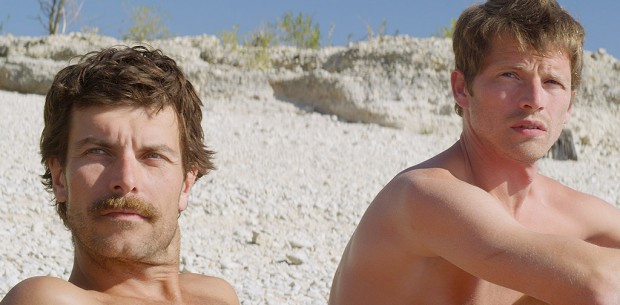
The parking lot, always glimpsed from the same perched, high-angle camera position, is the edge of society in Alain Guiraudie’s Stranger by the Lake. Men pull up here, in their cars, take a short walk through the forest, and emerge onto the shore of a lake, where the sun reflects off the water, leaving little sparks of summer light. The men sunbathe, gossip, chit-chat, ogle — and, above all, cruise. Guiraudie’s film never leaves this location; his coiled, merciless plot is constructed entirely out of what these men do near this lake over the course of a handful of bright days and portentous evenings. At first glance, there doesn’t seem to be much reason for conflict: many of the men know each other and are friendly, and the ones who don’t are generally content to hook up in the trees and then part ways. But the film ends in blood and ambiguity, revealing a dim view of human nature. – Danny K.
They Came Together (David Wain)
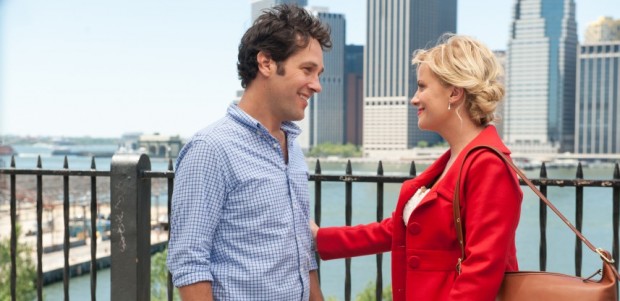
The subject of well-deserved lamenting, we’ve seen a number of films subvert or subtly ridicule Hollywood’s generic romantic comedy genre, but the parody to end them all has arrived with They Came Together. In an era where much of the spoof genre simply lazy repeats scenarios, David Wain‘s latest comedy brilliantly and hilariously deconstructs every aspect of the genre to provide one of the funniest films one is bound to see this year. – Jordan R.
Under the Skin (Jonathan Glazer)
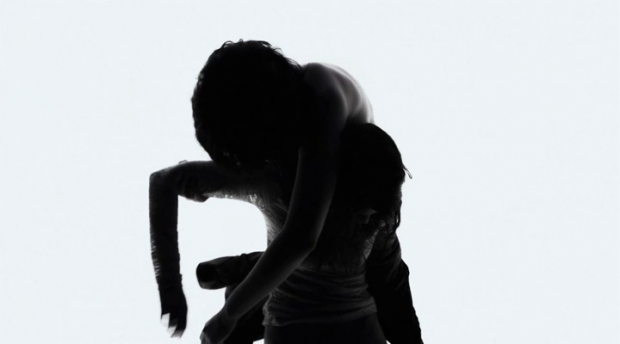
Each shot, scene, and location flows together in perfect harmony. Director Jonathan Glazer packs all these pretty images with real emotion, thanks to cinematographer Daniel Landin‘s stunning work, Mica Levi‘s haunting and moving score, and, of course, Scarlett Johansson‘s ambitious performance as an alien who abandons her mission. This is the kind of risky performance where an actor could easily fall on their face. Some scenes take huge tonal risks that only a good actor could pull off. Thankfully, Johansson is always up for the challenge. – Jack G.
Venus In Fur (Roman Polanski)
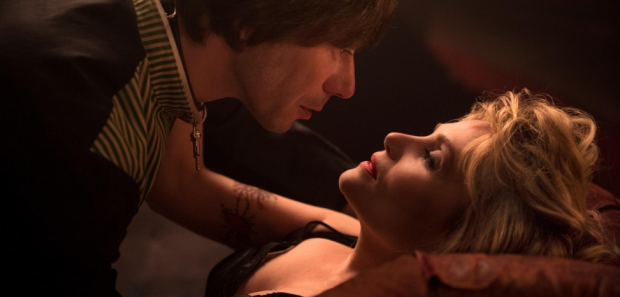
Once again adapting a stage play, Roman Polanski‘s take on Venus In Fur is more playful and cinematic than one might expect after his last feature, Carnage. Featuring committed performances by Mathieu Amalric, and, most strikingly, Emmanuelle Seigner, this back-and-forth, meta tug-of-war is a delightful, sharp tease of a film. If anything, it’s further proof that Polanski is still as lively as ever and has us looking forward to him jumping off the stage with D. – Jordan R.
We Are the Best! (Lukas Moodysson)
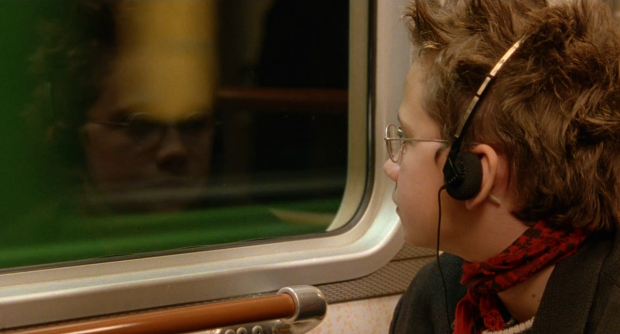
The opening title card to Lukas Moodysson’s joyous and vibrant film We Are the Best! reads, “Stockholm 1982” while early scenes consist of idle discussions about taxes and arguments about the laundry. These opening minutes suggest that “Stockholm 1982” is a city populated with older residents entrenched in rigorous domesticity. Bobo (Mira Barkhammar) and Klara (Mira Grosin), our thirteen-year-old heroines, want no part of this world. They sport botched mohawks and hide their femininity behind thick glasses and baggy clothing. Their greatest act of defiance is their affinity for punk music — a trend, they are promptly reminded by their angelic-looking classmate, that’s long been dead. – Zade C.
10 Films to Look Forward to
While the aforementioned titles should keep one busy for the time being, as promised, we’re also highlighting some of our favorites that have confirmed a release in the back half of the year. Starting with titles released as early as next week all the way up to dramas that will likely drop in the final weekend of the year, they are all worth seeking out. Also note that while we liked Land Ho!, Frank, Mood Indigo, A Most Wanted Man, The One I Love, The Trip to Italy, Canopy, The Skeleton Twins, and Tracks, the below ten get our highest recommendation. As more dates get announced and the fall gears up, be sure to stay tuned for our coverage and release updates.
The Better Angels (A.J. Edwards; Fall TBD)
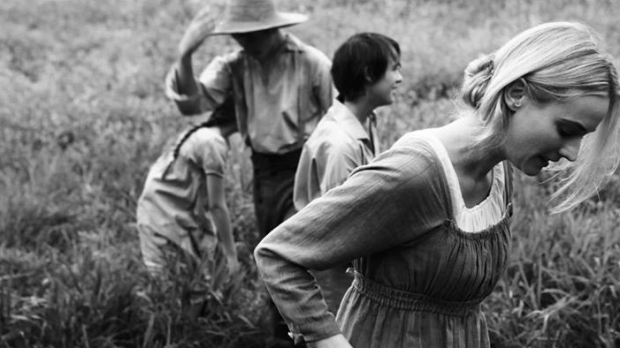
The style of Terrence Malick has long since been a comparison point in many critical examinations, as of late hitting something of a fever pitch. While I rarely find such claims to be of real merit, a new drama premiering at Sundance does more than proudly wear this style on its sleeve, instead using the auteur as a collaborator and key member of the creative process: The Better Angels, produced by Malick and directed by a To the Wonder editor, A.J. Edwards, makes for a sublime, transfixing, and informative look at the early life of Abraham Lincoln. While no specific date has been set yet, it’ll get a small release this fall and it’s well worth checking out. – Jordan R.
Boyhood (Richard Linklater; July 11th)
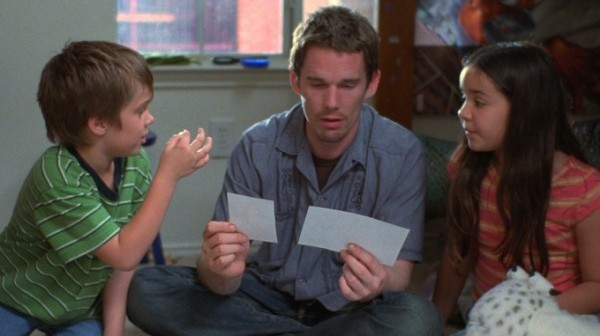
Exactly one year after completing his accomplished Before trilogy at Sundance, writer-director Richard Linklater returned with Boyhood, a film 12 years in the making and worth every minute of the wait. Shot one week at a time over the course of a decade or so, Linklater explores the formative years of a young man named Mason, played by Ellar Coltrane. Born into separated parents, played by Patricia Arquette and Ethan Hawke (doing some of the best work in their careers), Mason represents some part of a childhood all of us have known. This is a film of many small moments, all added together to make something quite wonderful. – Dan M
Closed Curtain (Jafar Panahi; July 9th)
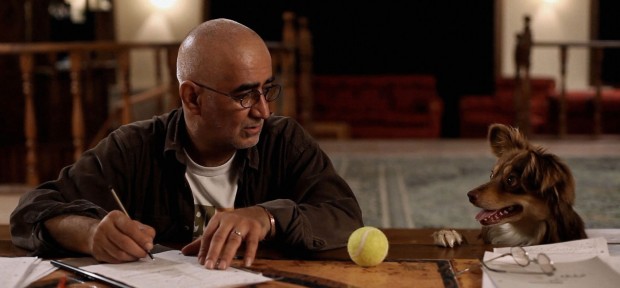
Closed Curtain is, somehow, the second film Jafar Panahi has made since being banned from making or working on films in any capacity, and it may be his best work yet. What begins as a fictional story about a sort of breaking-and-entering reveals itself to be primarily about hiding from “justice” and then suddenly morphs into a meta, non-fiction meditation on Panahi’s own situation. Two of the most lively and pressing debates in cinema right now are about the possibilities created by digital filmmaking and the ethics and aesthetics of hybrid fiction/non-fiction filmmaking, and Panahi wraps the two together without sacrificing personality or leaning too heavily on the abstract. Indeed, as the third act twists and turns, it becomes increasingly urgent, a cry for help embedded within a treatise on the state of cinema and an intelligent, fully-realized existential debate that pushes forward without ignoring the importance of storytelling even as it abandons its story altogether. – Forrest C.
The Congress (Ari Folman; Aug. 29th)
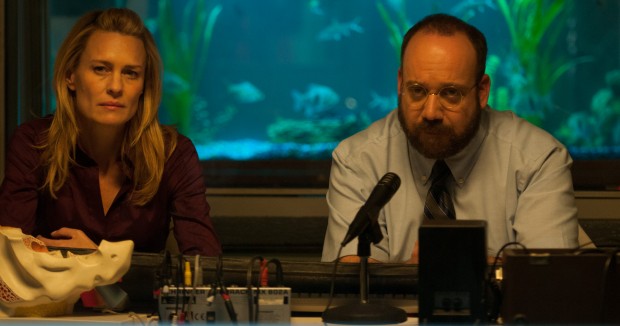
Ari Folman‘s ambitious live-action-animation hybrid, following up his acclaimed Waltz with Bashir, is an across-the-board success. It’s a mesmerizing film that you should wait to see in a theater — not on iTunes or, unless you have a great home theater, VOD. Not only does it feature stunning visuals, especially in the latter animated half, but Robin Wright’s best performance in years. If you watch House of Cards, then you know that’s saying a lot. – Jack G.
Foxcatcher (Bennett Miller; Nov. 14th)
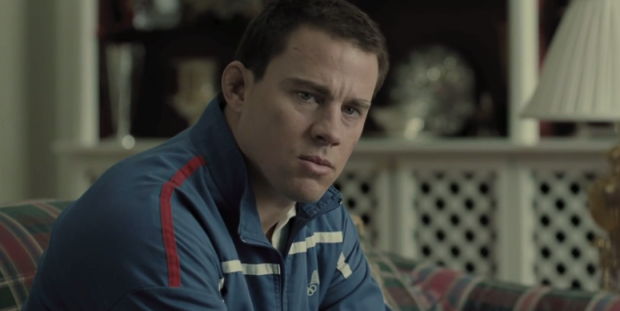
There is an unspoken emptiness that hangs boldly over Foxcatcher, which is sure to be one of the subtly darkest films made by a major Hollywood studio this year. The film’s Pennsylvania ranch initially appears like a gorgeous emblem of American society, sparkling with the country’s ideological symbols of majestic plains, galloping horses, and sizable, but not elegant, mansions. But there also seems to be a totalitarianism hanging over these as well, a kind that makes one second guess the images presented onscreen. The dread that sits over Bennett Miller’s superbly directed, bleakly dystopic view of American life is palatable in every moment without ever feeling overwhelming, simply sitting in the empty spaces that separate the physical bodies. Miller is a director of these spaces — spaces that have been hollowed out, leaving characters to need to sit, look, and think, as we often see with Channing Tatum’s Mark Schultz. Mark desires something, but never has the words to articulate it. – Peter L.
Life Itself (Steven James; July 4th)
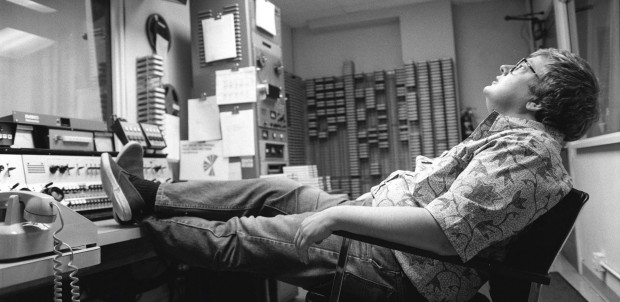
It’s only fitting that documentary filmmaker Steve James, of Hoop Dreams fame, was able to capture the iconic film critic Roger Ebert during the final months of his life. Ebert was one of the voices who championed Hoop Dreams and helped elevate it to a broader limelight, exposing it to audiences who very likely would have never heard of it — as he did with countless other films. It seems almost impossible for any film critic, filmmaker, or filmgoer not to have been in one way or another influenced by Ebert and his vocal opinions. Based loosely on his autobiography of the same name, Life Itself examines the man who was revered for his frank, direct, and articulate opinions on cinema. – Raffi A.
Listen Up Philip (Alex Ross Perry; Oct. 17th)
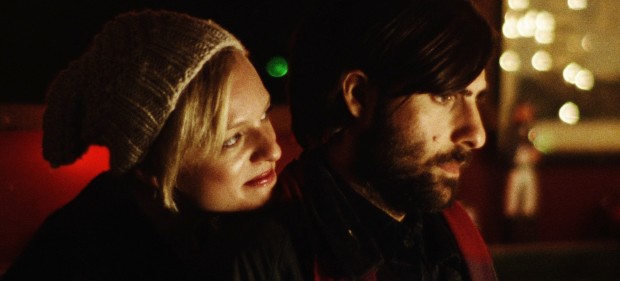
When a film follows a despicable character acting out despicable things, it takes a careful balance in both the direction and the writing to give an audience any desire to explore his or her life. Thankfully, Listen Up Philip, the latest drama from The Color Wheel writer-director Alex Ross Perry, excels in both categories. We open on our title character, played by Jason Schwartzman, gloating about his new novel to an ex-girlfriend and, then, attacking a handicapped former friend on his life choices, all while Eric Bogosian‘s inimitable narration provides another perspective to our protagonist’s narcissistic worldview. A likely bet for some fall festivals, it’ll also arrive on VOD and in theaters this October. – Jordan R.
Mr. Turner (Mike Leigh; Dec. 19th)
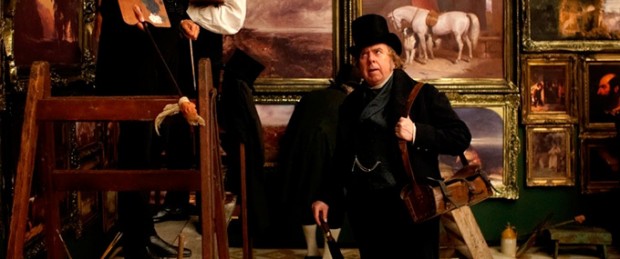
On their surfaces, Mike Leigh and J.M.W. Turner — the artist at the center of his latest film, Mr. Turner — couldn’t seem more like polar opposites. The 19th-century English painter created colossal landscapes of ships and seas, odd impressions that feature little in terms of human life. Leigh, the director of Naked, Topsy-Turvy, and Another Year, works on a microcosmic scale, investigating psychology through dialogue and camera movement, finding precise moments at which the human shell can break. But both are perceptibly searching for the in-between — or, as one character in the film suggests, turning “particles into chaos.” These two artists search for the essence of life through the blending of the material building blocks of the world, offering much to ponder without necessarily asserting their own importance. Even if the artist is a fool, the work will always stand. –Peter L.
Stray Dogs (Ming-liang Tsai; Late Summer TBD)
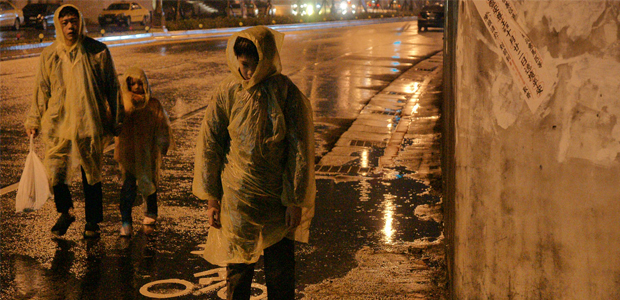
Presumably Tsai Ming-liang‘s final feature, Stray Dogs appropriately sees slow-cinema, an art film “movement” of which he’s considered one of the defining members, at its most extreme. With shots lasting around ten minutes in length — and, more often than not, displaying acts ranging from mundane to outright inactive; in particular, an extended “climax” that’s simply two people looking at a mural — the film could easily be described as “difficult.” Yet while it becomes an even trickier narrative piece by the final third, venturing into the obtuse (or as my interpretation sees it, the afterlife), the film’s emotions are always crystal-clear. Tsai’s form doesn’t adhere to the tenets of stylized realism with some distancing anthropology, but displays an intimacy of character, setting, and, above all, time. No wonder we come to look at two still figures as a living, breathing version of the very mural they’re turned to tears by. – Ethan V.
Winter Sleep (Nuri Bilge Ceylan; Winter TBD)

A brutal portrait of a man, Winter Sleep, for three hours and seventeen minutes, plunges us into Aydin’s (Haluk Bilginer) thoughts, logic, and feelings as he slowly comes to understand the personality he’s developed over the years. It’s an interesting step for Ceylan, who, after becoming the primary arbiter of Turkish cinema around the globe, seems to be entertaining his own version of Bergman’s Scenes from a Marriage. He has not lost a focus on the elemental beauty of environment that made both Climates and Once Upon a Time in Anatolia so thrilling, but while Anatolia felt content to be more of a philosophical rumination that only approached the essential nature of its characters when nearing a conclusion, Winter Sleep finds a way to weave these threads simultaneously. – Peter L.
What are your favorite films of the year so far? What are you most looking forward to?

